Phew! Our eyes and thoughts have been cast so far out into the outer reaches of the solar system following New Horizons and Pluto this week, that we’re just now getting to the astronomical action going on in our own backyard.
You’ll recall that Venus and Jupiter have made a fine pairing in the evening sky since their close approach on July 1st. Despite some of the incredulous ‘Star of Bethlehem’ claims that this was a conjunction that happens ‘once every two thousand years,’ this sort of pairing is actually quite common. In fact, Venus and Jupiter are set to meet up again in the dawn sky later this year on October 25th.
Keep an eye on the bright dusk pair, as they’re getting company, starting tonight. Venus just passed greatest brilliancy on July 12th shining at magnitude -4.5, and will now swiftly sink from view as it laps the Earth on its path around the Sun.
The Moon reaches New tonight on Thursday, July 16th at 1:26 Universal Time (UT)/9:26 PM EDT (Wednesday night) marking the start of lunation 1145. Said lunations are numbered by convention from the first New Moon of 1923.
Thursday night will offer the first chance to see the razor thin Moon below Venus and Jupiter. For the US East Coast, the waxing crescent Moon will be about 1% illuminated and 19 hours old, a tough catch but not impossible.
The bright +1.4 magnitude star Regulus also joins the celestial scene as well. Starting on Thursday July 16th Venus, Jupiter and Regulus will all fit inside a circle six degrees wide. Regulus is 79 light years distant, and Venus can actually occult Regulus, as last happened on July 7th, 1959 and will next occur on October 1st, 2044.
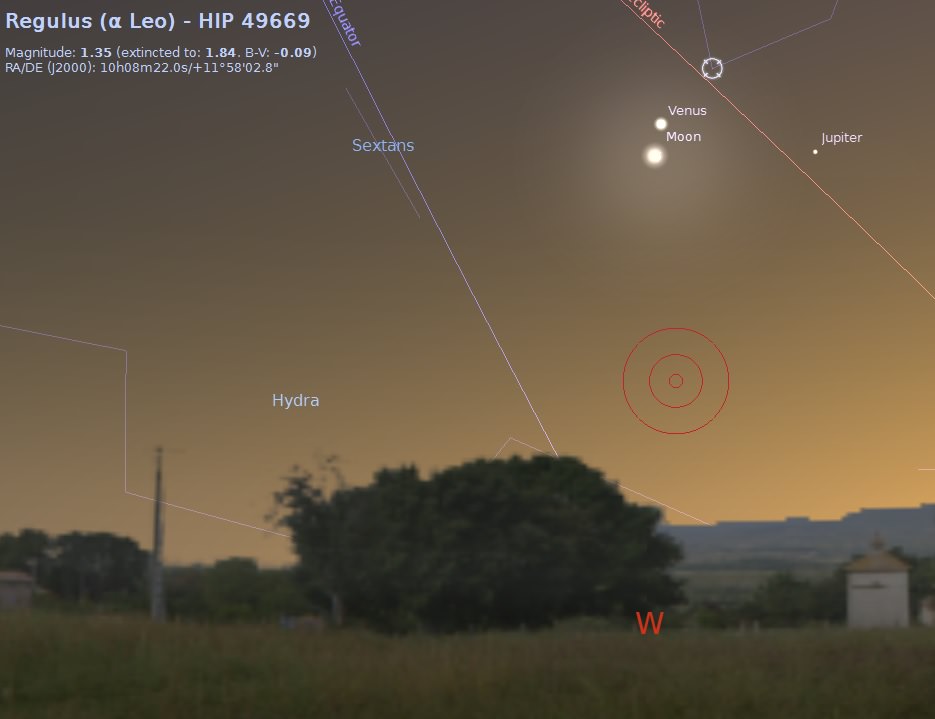
But wait, there’s more. Keep watching each evening, as the fattening crescent Moon approaches the trio. On Saturday July 18th, The Moon, Venus, Jupiter and Regulus fit inside a six degree circle.
And don’t miss catching sight of Comet C/2014 Q1 PanSTARRS joining the planets low in the western dusk sky as well. Q1 PanSTARRS is currently at +4th magnitude and holding steady.
The Moon will actually occult (pass in front of) Venus on Sunday, July 19th 1:00 UT/9:00 PM EDT (Saturday night) favoring the South Pacific, though the rest of the world will see a stunningly close pass.
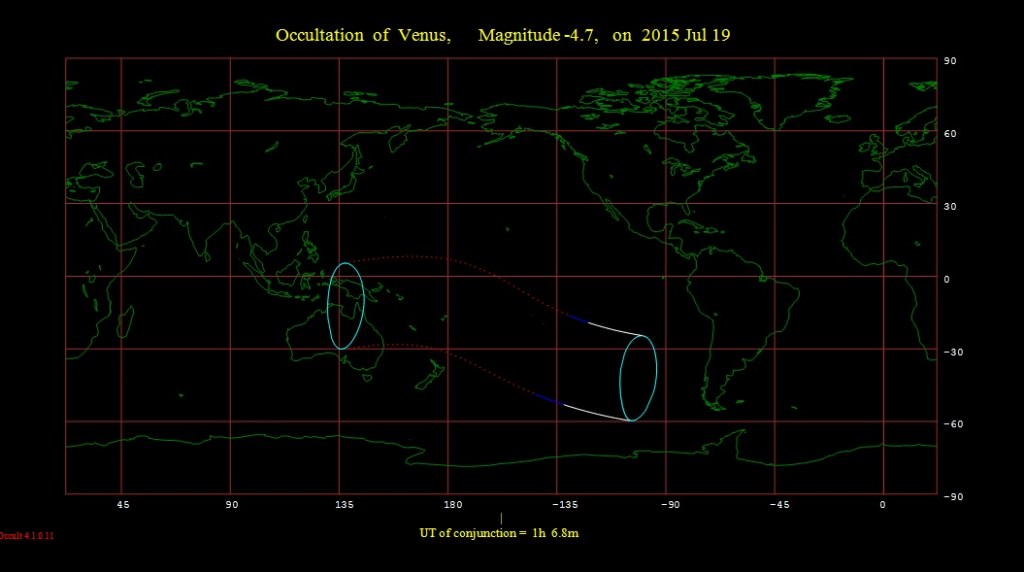
This is one of three occultations of Venus for 2015. The next good one for North America is a daytime occultation of Venus by the Moon on December 7th, and the Moon and Venus also cross paths later this year on October 8th for viewers based in Australia and New Zealand at dawn.
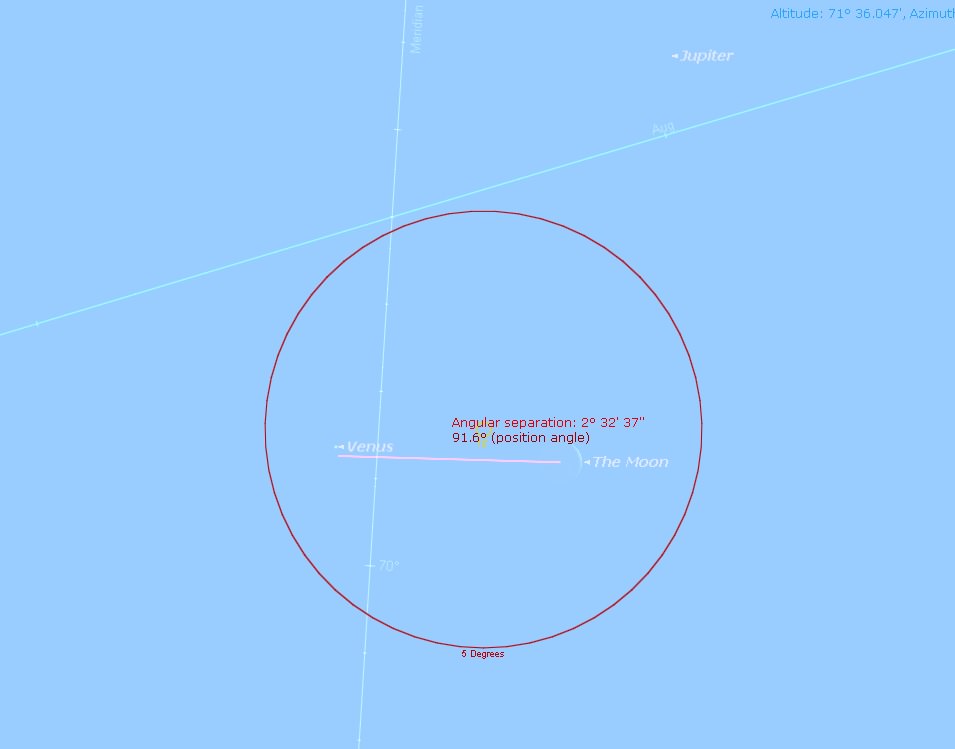
July 18th and 19th offer some great chances to see Venus in the daytime, using the nearby crescent Moon as a guide. Venus is actually intrinsically brighter than the Moon, though the Moon is much larger and easier to see against the daylight sky. Block the Sun behind a hill or building in your daytime planetary quest, and the bluer the sky, the better. Venus sits 34 degrees east of the Sun this weekend, making the best time to carry out this feat of visual athletics right around 4 PM local, about four hours before sunset.
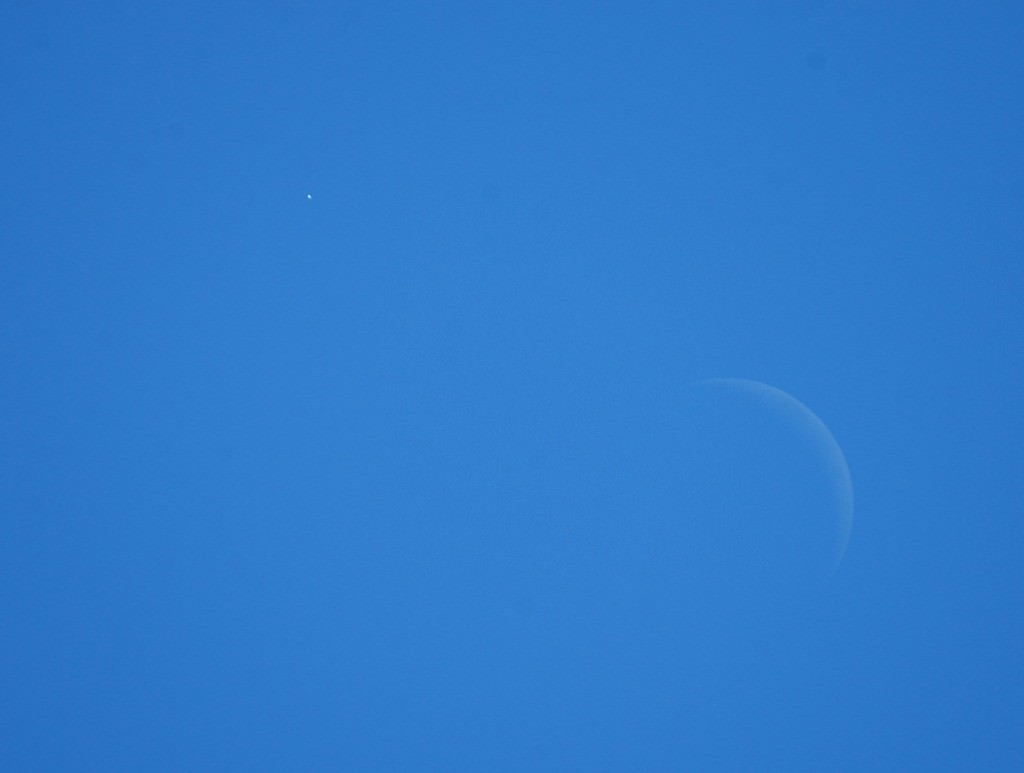
Venus then begins apparent motion in retrograde on July 23rd prior to reaching aphelion or the most distant point in its orbit on August 8th at 0.7282 Astronomical Units (AU) or 112 million kilometres from the Sun.
When is the last day that you’ll be able to see Venus? Though it’ll be getting thinner in apparent phase each evening, its disk will also be getting larger. At 58” during inferior conjunction, Venus displays the largest apparent diameter of any planet as seen from the Earth. We’ve managed to follow Venus right through its passage between the Earth and the Sun as it moves from the dusk to dawn sky as seen from Arctic climes.
Starting on August 13th, you can even ‘follow’ Venus as it passes into the field of view SOHO’s LASCO C3 camera. Though Venus transited the Sun in 2012 two inferior conjunctions prior to this year, it won’t do so again as seen from Earth until 2117.
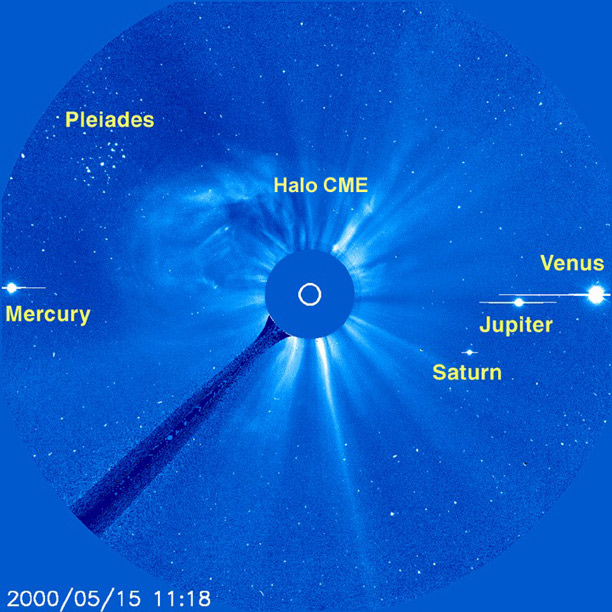
Finally, Venus reaches inferior conjunction on August 15th less than eight degrees from the limb of the Sun, and spends the remainder of 2015 in the dawn sky, as the phases reverse cycle once again.
And speaking of the Moon, here’s what Pluto and Charon would look like if you moved ‘em up to one lunar distance away:
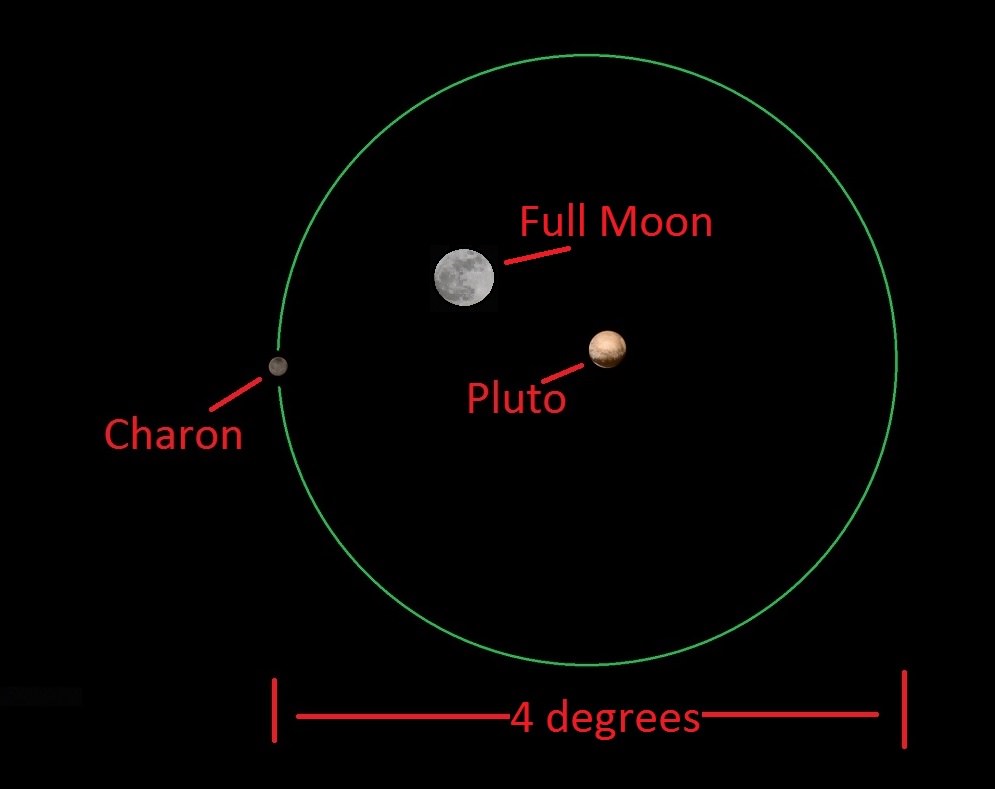
Be sure not to miss all of the upcoming planetary action, transpiring in a dusk sky near you.

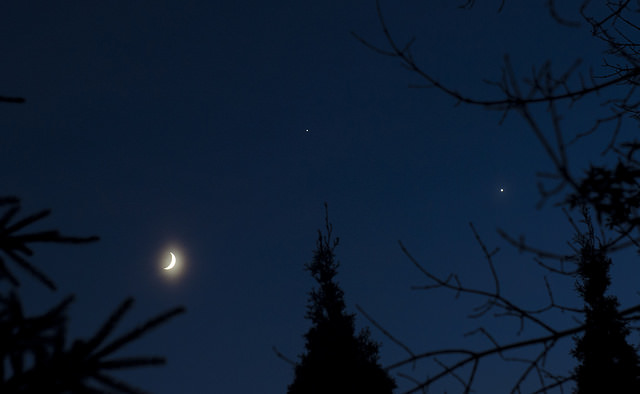
Great stuff David, look at my stuff. 😀
http://i2.photobucket.com/albums/y33/HeadAroundU/the%20dwarf%20and%20the%20king%20of%20dwarfs%20cap%20shoes.jpg
It was a perfect triangle from Israel
Here is my version
http://i.imgur.com/tXrCXAG.jpg
I also have a version with Regulos
Most awesome… thanks for sharing. It’s been chronically cloudy here in Florida, typical summer weather.